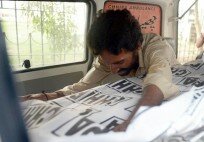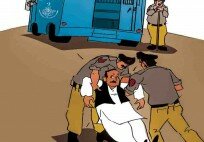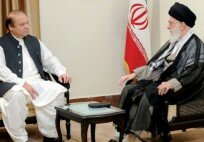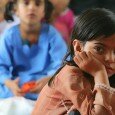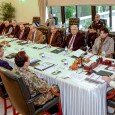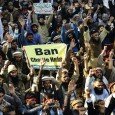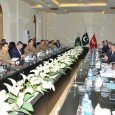By Iftikhar Firdous –
A decisive and sincere national action plan to eradicate polio is the need of the hour
On an official level, the government of Pakistan is doing its best to overcome one of its biggest challenges in recent times, Polio. Despite its efforts, cases keep spouting up from all four provinces and the more worrisome Federally Administered Tribal Areas (FATA).
With millions of dollars poured into the campaign, experts fear that the number of cases will exceed 200 this year. The last time the country reported 199 cases was back in the year 2000. This means the war against polio has come down to nothing in a span of fourteen years – But why is the question?
In January, this year the World Health Organization (WHO) declared Peshawar, the provincial capital of Khyber Pakhtunkhwa as the “World’s Largest Polio Virus Reservoir”. This was followed by a rigorous anti-polio campaign in the province, which was termed as a success not just locally but globally as well.
However, in May this year the WHO imposed travel restrictions on Pakistan for exporting the virus to other countries. While Pakistan protested on a political level, its shame has not subsided. Nigeria, Cameron and Syria who were also in the list of travel restrictions with Pakistan have all moved towards betterment since then.
Nigeria reported only 6 children who were paralyzed by polio this year, compared with 47 at the same time last year. The alarm bells that set-off in the Middle East have also stopped ringing with no cases reported since April 2014. In Cameron, a large number of children missed their vaccination but, a senior global health expert from Geneva says that the African virus has “not left the continent”, making it less risky for other countries as well.
“In March, WHO declared its South-East Asia Region polio-free. That big step means that 80% of the world’s population now lives in a polio-free country,” Dr Margaret Chan told the special committee on Polio Eradication at the United Nations General Assembly in New York. However the expert told the world leaders that Pakistan was the single most important stumbling block along the road to ending polio, once and for all.
Polio politics
After the 18th Amendment, the ministry of health is now a provincial subject. However, Polio remains under the ‘Vertical Projects’ still managed by the Federal Government. There exists a Prime Minister’s Polio Cell as well as a Chief Minister’s Polio Cell in addition to district level and union council level monitoring units. The problem arises when there are opposing governments within the federation and provinces.
An acute example is the relation between the Pakistan Muslim League – Nawaz (PML-N) and Pakistan Tehreek-e-Insaf (PTI). With the massive campaign in KP, the sewage sample results have shown that the concentration of the virus has been reduced till quite an extent but because vaccination cannot be carried out in the adjoining tribal areas, the province still remains vulnerable.
The problem although should be resolved through a unified strategy, it has become a point of political scoring. Programs such as Sehat Ka Insaf are great initiatives, experts believe, but neither migration control nor area-bound eradication can defeat polio completely. Both the federal and provincial governments will have to work together to formalize a joint political strategy because the polio virus does not recognize politically boundaries.
The security paradigm
“We have reduced our visibility on ground after workers associated with the polio campaign have been targeted,” an official associated with UNICEF’s communication strategy says requesting not to be named. However, he explains that one of the major reasons for the increase in polio cases throughout the country has been the lack of sensitization which is directly linked to the security parameters that surround the region.
The Taliban’s ban on polio campaign in FATA, the targeting of polio workers throughout the country and the name of Shakil Afridi, the doctor who was used by the CIA for a phony vaccination in the hunt for Osama Bin Laden are all contributing factors that impede the polio eradication initiative.
However, Saira Afzal Tarar, the Minister of State for National Health Services, in startling revelation told Senate in May this year that the main reason was that the provinces had provided “concocted” stats on the immunization campaigns which had put the success ratio has high as 80 to 90 percent. But the ground realities differed. To date, Balochistan remains the least accessible province in terms of immunisation, with 16 percent of its population being immunized, followed by Sindh with 29 per cent. Punjab has the highest level of immunisation with 68.5 percent and in Khyber Pakhtunkhwa the rate is 52.5 per cent as per the government’s records.
Refusals and inaccessibility
FATA remains at the core of inaccessibility, out of the total 184 cases of polio (reported till the filing of this report) majority of them – 127 – are from the tribal areas. The next to follow is KP with 33 followed by Sindh with 17 cases, Balochistan 5 and 2 cases in Punjab.
The UNICEF’s Chief Communication Officer, Ban Al-Dhayi says that the refusals in Pakistan have been reduced to (0.13%) citing a recent survey “the problem is that these refusals are mostly clustered,” she says.
However, doctors affiliated with the campaign on ground narrate a different story. A senior official associated with the campaign in the Frontier Region of Bannu, a buffer-zone between FATA and the settled areas says that it’s astonishing for him that a large number of people who refuse to vaccinate their children include a large number of educated people. He categorizes refusals as follows: 1) Refusal on religious grounds: Where the parents under the influence of local clerics consider the vaccination consists of substances not allowed by religion.2) Political skepticism: Parents who refuse vaccination because they are skeptic about motives of the campaign.3) Silent refusals: Parents who tell the vaccination team the children are not at home because either they don’t care or they don’t know the implications of not-vaccinating their children. “Surprisingly it’s easier to convince the illiterate but very difficult to convince educated parents,” he says.
The way ahead
“There is no other way ahead but to immunize the children,” says Dr Elias Durry, the head of the WHO’s Polio Eradication Program in Pakistan. Around 80 percent of the cases in 2014 are all refusals. Officials believe that till there is a single child that is left unimmunized, polio cannot be eradicated.
The causes for the spread of polio virus in Pakistan are many, and not a single cause solution will be able to resolve problem at hand. The campaign itself requires newer initiatives which include changing ground realities and above all a massive overhauling of its procedural implementation as well as the political will.
The situation for the time being remains grim. While the International Health Regulatory Body’s Emergency Committee is about to review Pakistan’s case in November, there seems to be no way out. It seems that the more travel restrictions will be imposed on Pakistan as for now it’s being viewed as a threat for the entire world. Sorry to say but 9 out of 10 cases of polio globally are from Pakistan. There seem to be second chances now. The war against polio is not a choice any longer but a need.



















